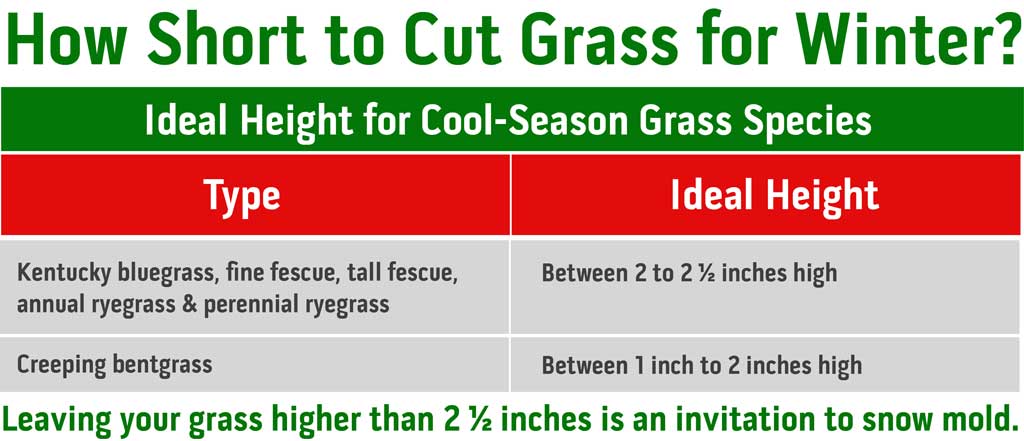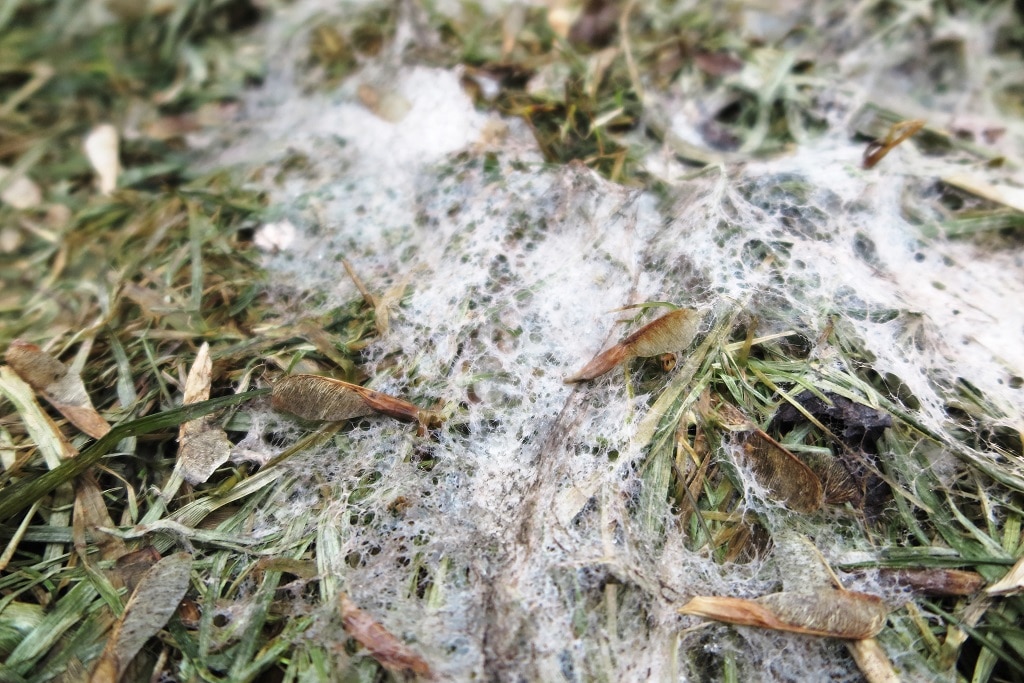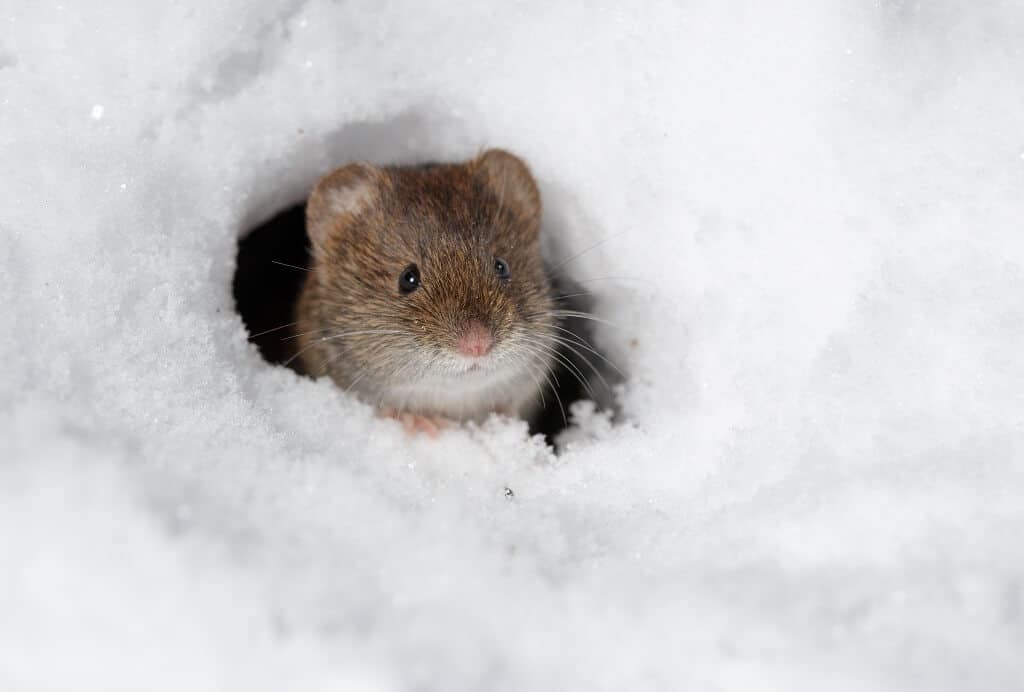
- Mon, Nov 2020
- |
- Moran’s Landscaping & Excavation LLC
Winter is coming, so it’s time you prepare your lawn for the chilly months ahead. I didn’t want to repeat GOT’s most famous phrase, but I couldn’t resist (pardon me). But in all seriousness, today we’ll talk about how short to cut grass for winter.
We’ll also answer questions like what effects will cutting your lawn at the wrong height have on the turf health. And we’ll give you some tips on the proper mowing techniques to prepare your grass for winter weather and the growing season thereafter.
How Short to Cut Grass for Winter: Ideal Grass Height & Mowing Frequency!
Bears hibernate during winter, and plants do something similar. This process or period is called dormancy. When temperatures drop, your grass stops growing.
According to the exhaustive Wikipedia, dormancy is defined as: “a period of arrested plant growth. It is a survival strategy exhibited by many plant species, enabling them to survive in climates where part of the year is unsuitable for growth, such as winter or dry seasons.”
Late fall is when grass stops growing, and it prepares soft tissues to survive while temperatures drop.
Now that you know what happens to your grass plants during dormancy, it’s time to provide proper lawn care, so your turf endures the winter weather harmless.
How Short to Cut Grass for Winter?

How short to cut grass for winter? The ideal grass height for winter is between 2 to 2 ½ inches high. Mowing your lawn at this height allows your grass plants to optimize their nutrients, promotes root growth & builds grass resilience to the cold winter weather.
Leaving your grass higher than 2 ½ inches is an open invitation to snow mold.
This length applies for cool-season grass species like Kentucky bluegrass, fine fescue, tall fescue, annual ryegrass, and perennial ryegrass.
If you happen to have Creeping bentgrass (which is also another type of cool-season grass), you have to mow your lawn shorter from 1 inch to 2 inches high.
So, if you were wondering how short to cut grass for winter, we answered that question as best as we could.
Then that means that this blog is over? Wait a second. We still have highly important info under our sleeves. Take a look below.
Proper Mowing Technique: Never Remove More Than 1/3 of the Grass Blades’ Height at a Time
Surely, that was a long title. But we made it that long because that was a very important advice for proper lawn care.
So, we’ll say it again: when mowing your lawn, as a rule of thumb, you should never cut more than one-third of the grass blades off during a single mowing.
Now that you know how short to cut grass for winter, what you want to do is to get to the ideal grass height gradually if it’s overgrown.
Before the first frost, we advise you to mow your lawn two or three times. In this way, you’ll slowly reduce the grass blades’ height each time to reduce stress. And in the final mowing, you’ll get your lawn down to its ideal height with no problem.
To know when is the first frost of the season, click on The Old Farmer’s Almanac and then add your zip code.
We also recommend you spread each mowing several days in between. Doing so will allow your grass to recover from the stress and condition it to withstand a shorter height.
Mowing the lawn too short will stress and weaken your grass plants, leaving them vulnerable to the harsh weather ahead.
Why Is It Important to Cut the Grass at the Ideal Height Before Winter?
We already told you the ideal grass height for winter. Now, we would love to tell you the importance of following this rule.
In short, you’ll prevent fungal diseases, deter pests & promote healthy growth during spring.
Prevent Snow Mold

When getting your lawn ready for the winter weather, you don’t want to leave it any higher than 3 inches.
Not mowing your lawn at the ideal height can cause your grass blades to mat, compress, or bend under the snow cover.
When long grass spends all the winter compressed under the snow cover, this will lead to fungal diseases. In the spring, you’ll notice fungal diseases like snow mold or other fungi.
Keep this in mind: short grass blades stand up to winter snow. And in spring, you’ll have a lawn that is healthy and ready to grow!
Also, leaving mulched leaves to mat under the snow cover is a bad idea. This could lead to a fungal disease as well. So, make sure that after the final mowing, you leave your lawn clean of mulched leaves.
Avoid Sheltering Voles & Rodents

Long grass and snow create the perfect shelter for voles & rodents.
Since you know the ideal grass height for winter, what you have to do is simple: you need to follow our recommendations.
You need to leave your grass height for winter between 2 to 2 ½ inches high. In this way, you won’t give any chances for voles, moles, mice, and other small rodents to hide from predators on your lawn.
When the grass blades are higher than 3 inches, these rodents can easily make trails and nests in your lawn, eat your grassroots, stems & blades.
You avoid rodents by keeping your lawn short since they will be less likely to venture into short grass where they won’t have cover from cats, foxes, hawks & owls.
Conclusion!
How short to cut grass for winter? Our straightforward answer is between 2 to 2 ½ inches high.
Two bonus tips:
- Verify that the lawn mower you’re going to use has sharp mower blades.
- During winter, your grass will endure stress, lack of nutrients and water. So, don’t forget to fertilize your lawn during fall. This last fertilizing will nourish your lawn, helping it to survive winter and having a healthy growing season next year.
By following our recommendation of the ideal grass height for winter, you’ll protect your lawn from snow mold and other fungal diseases. Also, your grass won’t become the shelter for lawn destroying rodents.
Hope you follow our tips so that your lawn survives winter and looks healthy and ready to grow in spring!
